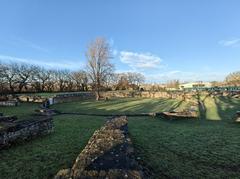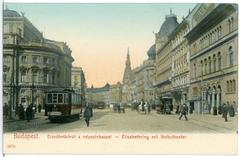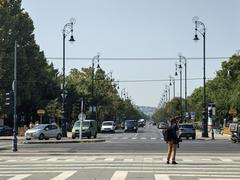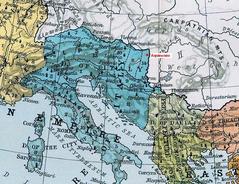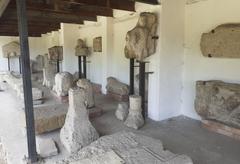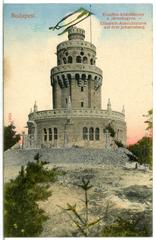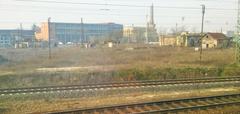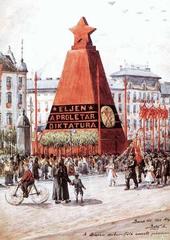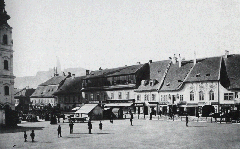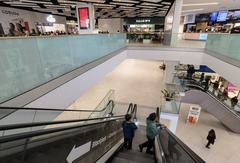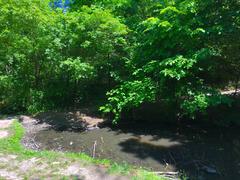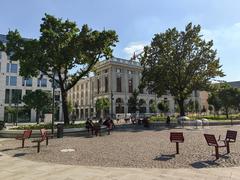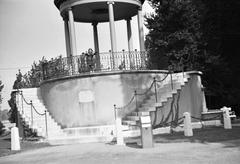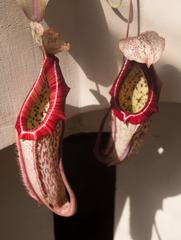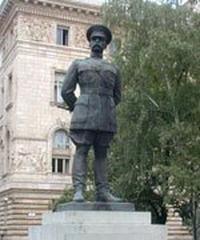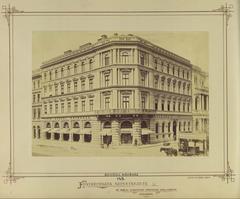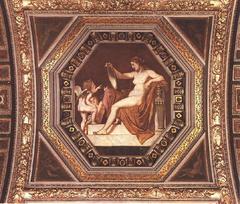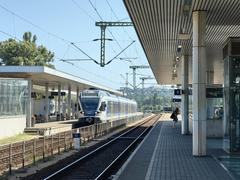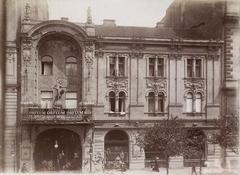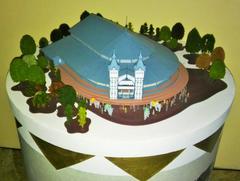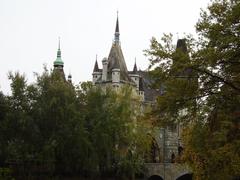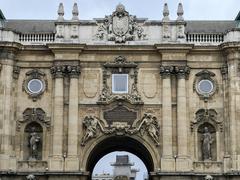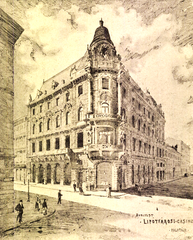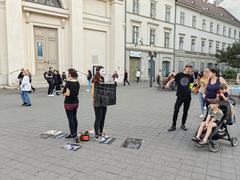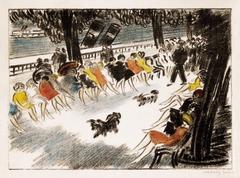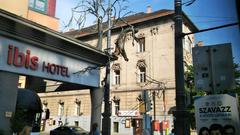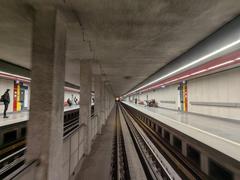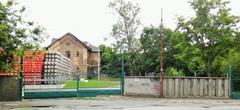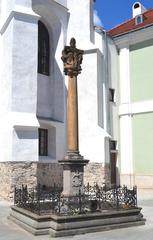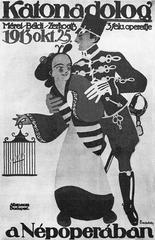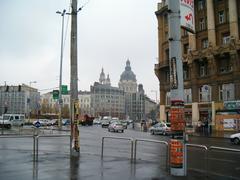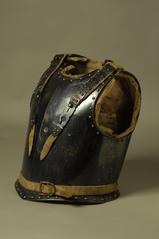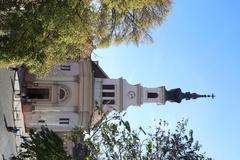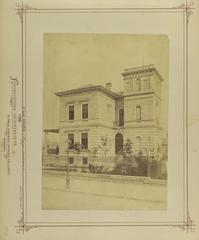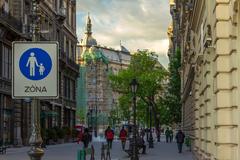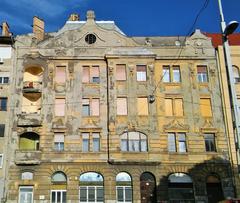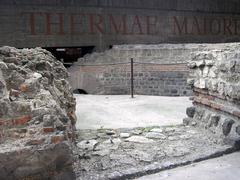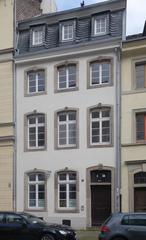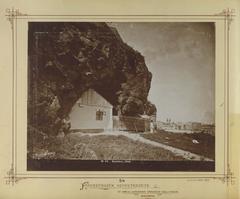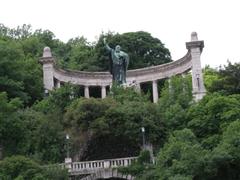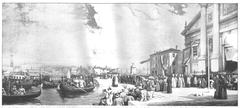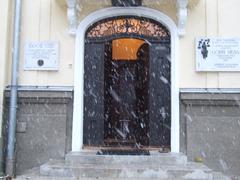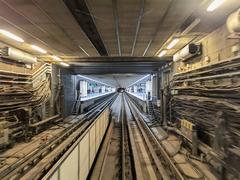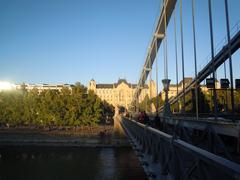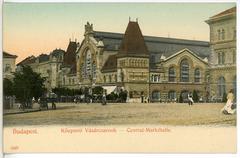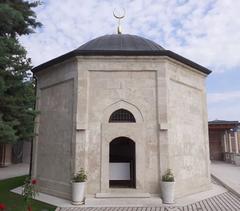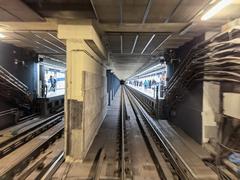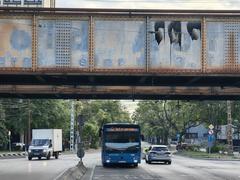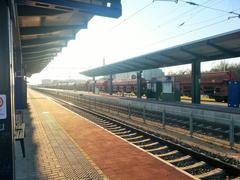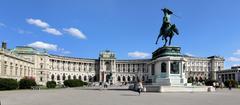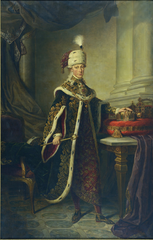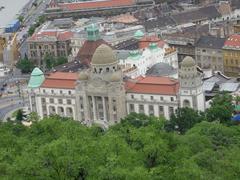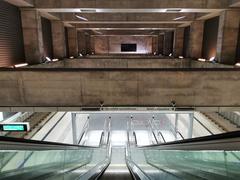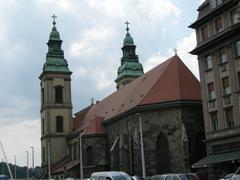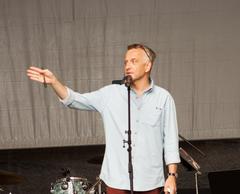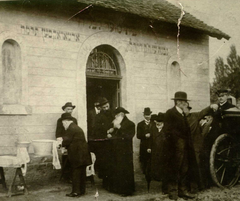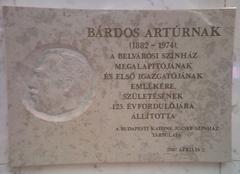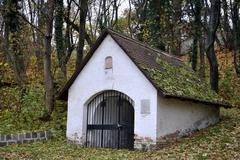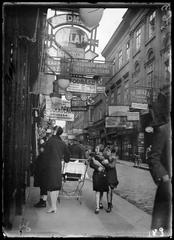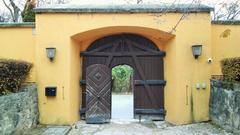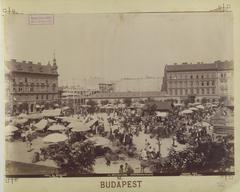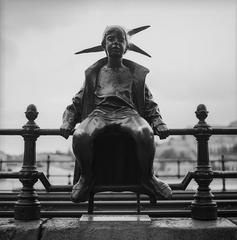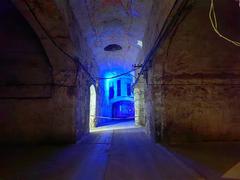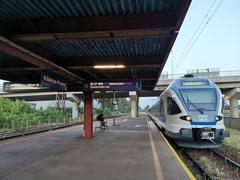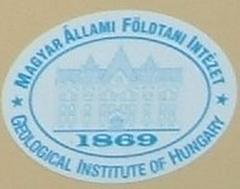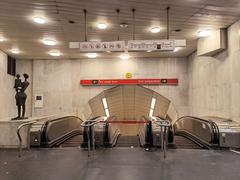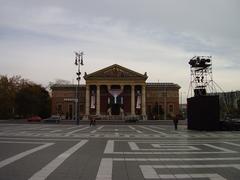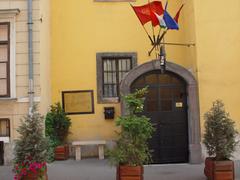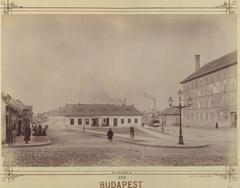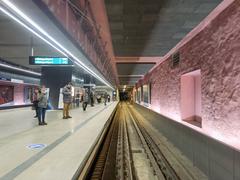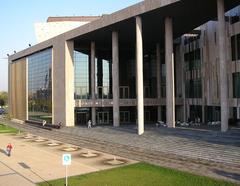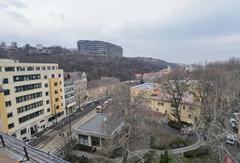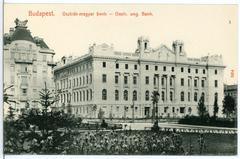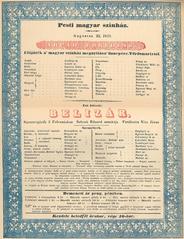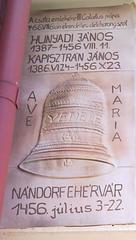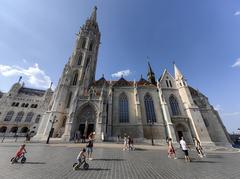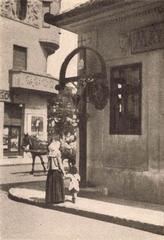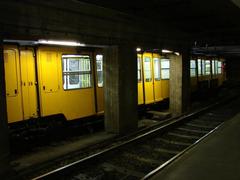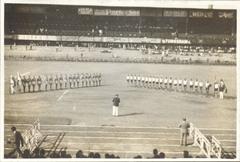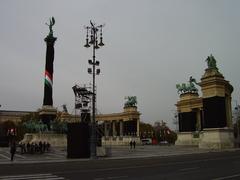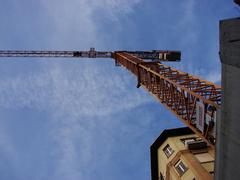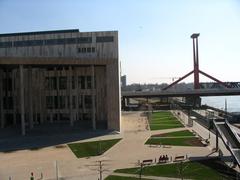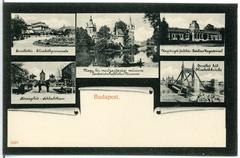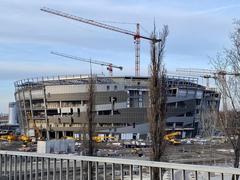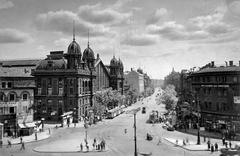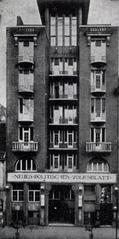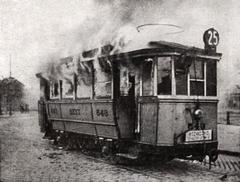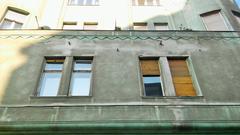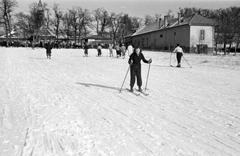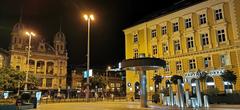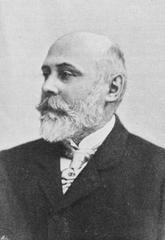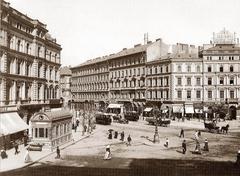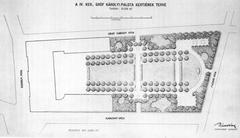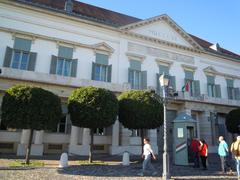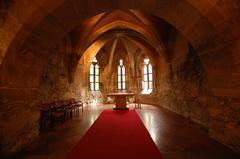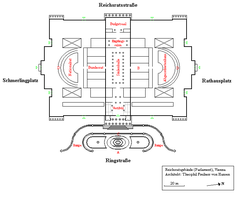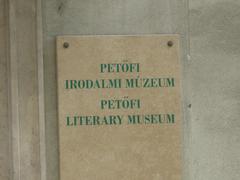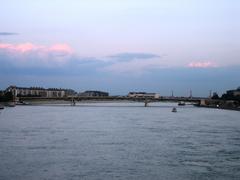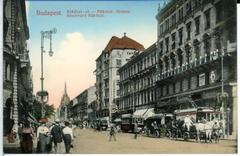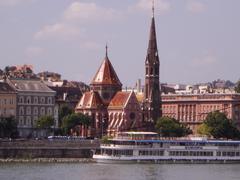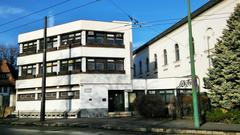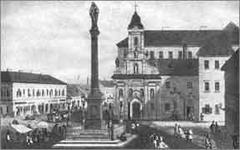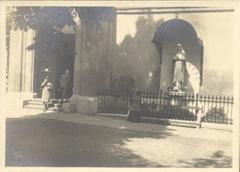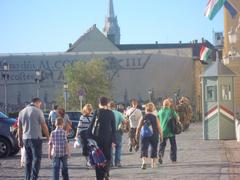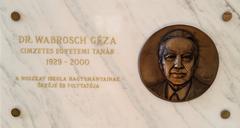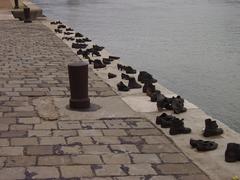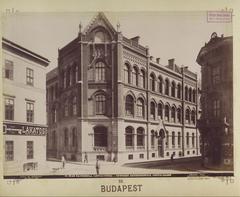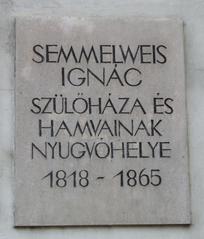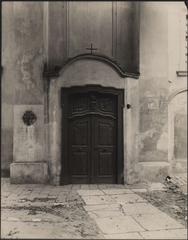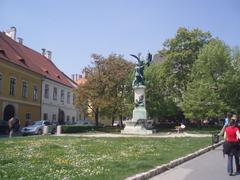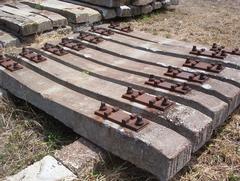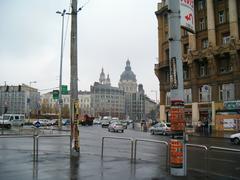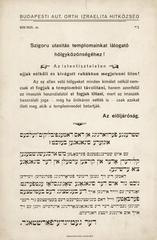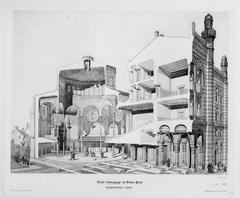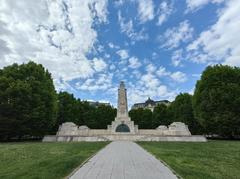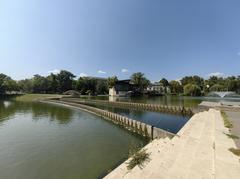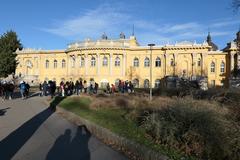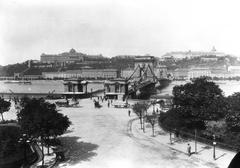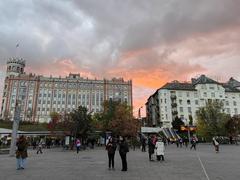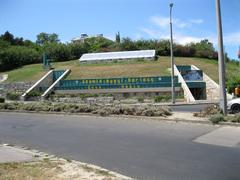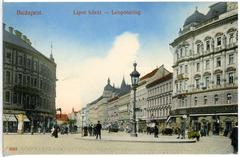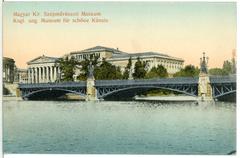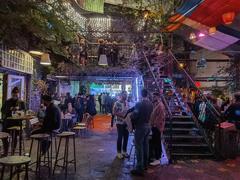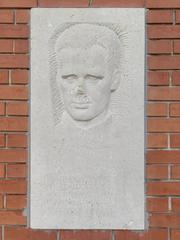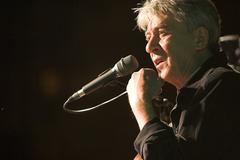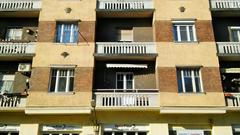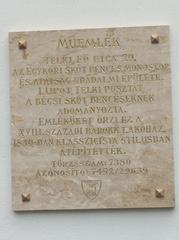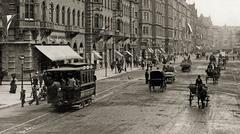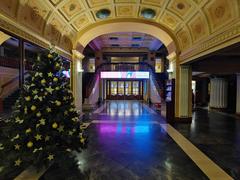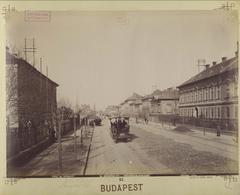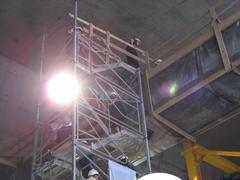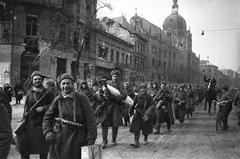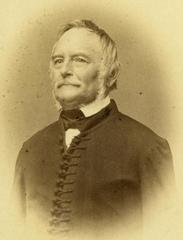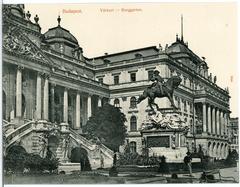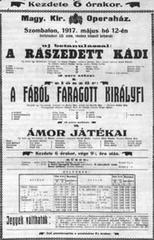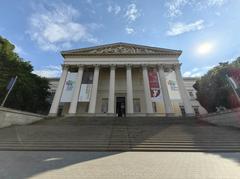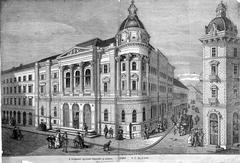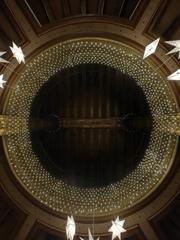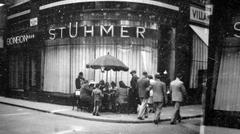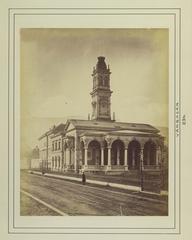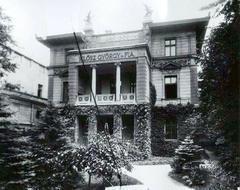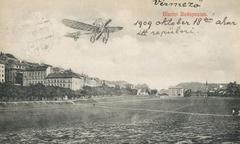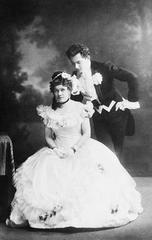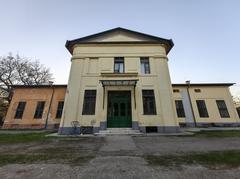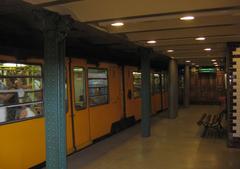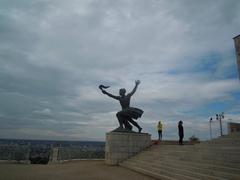
Saints Peter and Paul Church Budapest: Visiting Hours, Tickets and Historical Sites Guide
Date: 04/07/2025
Introduction
In Budapest’s historic Óbuda district stands the Saints Peter and Paul Church, a significant monument reflecting Hungary’s rich Christian heritage and artistic traditions. With origins in the medieval era and a current Baroque structure dating from the mid-18th century, this church embodies centuries of religious, cultural, and artistic evolution in Central Europe. Dedicated to the apostles Peter and Paul, foundational figures of Christianity, the church is not only an active parish but also a vital cultural landmark, showcasing opulent Baroque architecture, masterful frescoes, stained glass art from the renowned Róth Miksa workshop, and a historic pipe organ known for its superb acoustics. It remains a vibrant center of worship, hosting regular Masses, sacraments, and special events, most notably the Feast of Saints Peter and Paul on June 29, which attracts both pilgrims and tourists. Easily accessible via public transport and situated near attractions like the Aquincum Museum and Óbuda’s charming old town, the Saints Peter and Paul Church offers visitors a profound connection to Budapest’s spiritual and cultural essence. This comprehensive guide details everything a visitor needs to know, including visiting hours, ticket information, historical significance, artistic marvels, and nearby attractions, ensuring a well-informed and enriching experience.
Table of Contents
- History and Religious Significance
- Artistic and Architectural Highlights
- Visiting Information
- Events, Guided Tours, and Photography
- Nearby Attractions and Suggested Itineraries
- Visitor Tips and Practical Information
- Cultural Events and Seasonal Highlights
- Frequently Asked Questions (FAQ)
- Summary and Call to Action
- References
History and Religious Significance
Origins and Historical Development
The Saints Peter and Paul Church in Óbuda is one of Budapest’s most historically significant religious sites. Its roots in the area are linked to the Roman city of Aquincum, where Christian communities were present by the 4th century. Following Hungary’s adoption of Christianity as the state religion under King Stephen I in the 11th century, churches dedicated to Peter and Paul became common.
After the Ottoman occupation (1541–1686), the church was rebuilt in the Baroque style between 1744 and 1749. This reconstruction symbolized the Catholic revival and the resilience of local faith communities, enabling the church to witness wars, regime changes, and social transformations while remaining a vital center of spiritual and community life.
Patron Saints and Religious Life
Saints Peter and Paul are revered as the foundational apostles of Christianity. Peter is seen as the “rock” and the first Pope, while Paul is recognized as the missionary to the Gentiles. Their joint feast day on June 29 is a major event, celebrated with special Masses and festivities. The church continues to be an active place of worship, offering regular liturgy, sacraments, catechesis, and community programs, embodying the enduring spiritual life of its congregation.
Artistic and Architectural Highlights
The Saints Peter and Paul Church is a prime example of Baroque ecclesiastical architecture, featuring:
- Twin towers and an imposing façade crafted from local stone.
- An elaborate Baroque interior with frescoed ceilings, intricate stucco work, and gilded altars.
- Stained glass windows created by the esteemed Róth Miksa workshop, illustrating biblical narratives and the lives of the patron saints.
- A high altar adorned with statues of Saint Peter (holding keys) and Saint Paul (with a sword).
- A historic pipe organ built by the Angster workshop, used for both sacred music and concerts.
- Side chapels dedicated to various saints, decorated with icons, votive offerings, and polychrome sculptures.
- Frescoes and mosaics depicting significant biblical events and the heavenly Jerusalem.
- Liturgical treasures, including silver vessels and embroidered vestments, some of which are displayed in a small on-site museum.
Recent restoration efforts have preserved these magnificent features, ensuring their splendor for future generations.
Visiting Information
Visiting Hours
- Monday–Saturday: 9:00 AM – 6:00 PM
- Sunday: 12:00 PM – 6:00 PM
- Note: Hours may vary on public holidays, during religious services, or for special events. Visitors should always check the official Budapest Info site or the parish website for the most current information.
Tickets and Admission
- Entry: Free for worshippers and general visitors.
- Guided tours/museum access: A modest fee (approximately 500 HUF) may apply, payable onsite or via the Budapest tourism portal.
- Donations: Contributions are greatly appreciated and help support the church’s maintenance and preservation.
Accessibility
- Wheelchair access: Ramps are available at the main entrance, with most of the nave and sanctuary being accessible.
- Assistance: Support for visitors with special needs is available upon request.
- Multilingual support: Brochures and audio guides are offered in multiple languages to enhance the visitor experience.
Getting There
- Address: Szent Péter és Pál-templom, Óbuda district, Budapest, Hungary.
- Public transport: Tram lines 1 or 17, or bus lines 9, 29, or 109. The nearest metro station is Árpád híd (M3 line), followed by a 10–15 minute walk. Public transport is recommended for ease of access (Trip to Budapest).
- By taxi: Taxis are readily available throughout Budapest.
Events, Guided Tours, and Photography
- Guided tours: Available on weekdays, with tours offered in Hungarian and English (other languages by arrangement). Advance booking is recommended.
- Special events: The church hosts organ recitals and choral concerts. Information on these events is posted on the church’s website and notice board.
- Photography: Permitted in designated areas, except during services. Visitors are asked to refrain from using flash or tripods.
Nearby Attractions and Suggested Itineraries
Nearby Attractions
- Óbuda Main Square: Features historic architecture, charming cafes, and the Óbuda Museum.
- Aquincum Museum and Roman Ruins: An archaeological park showcasing Roman remnants in the area.
- Danube Promenade: Offers scenic riverside views of Buda Castle and the Parliament Building.
- Óbuda Synagogue, Kassák Museum, Hungarian Museum of Trade and Tourism: Various cultural venues within walking distance.
- Óbuda Island (Hajógyári-sziget): A green space known for hosting the Sziget Festival (Songkick).
Suggested Itineraries
Combine a visit to the Saints Peter and Paul Church with a stroll through Óbuda’s historic center, an exploration of the Aquincum ruins, and stops at riverside cafes for a fulfilling half-day or full-day cultural experience (PlanetWare).
Visitor Tips and Practical Information
- Dress code: Modest attire is required; ensure shoulders and knees are covered. Hats should be removed inside the church.
- Etiquette: Maintain silence during services and respect worshippers and any posted instructions.
- Restrooms: On-site facilities may be limited; plan to use nearby cafes or public restrooms.
- Gift shop: May offer religious souvenirs and postcards.
- Drinking water: Tap water in Budapest is safe to drink; carrying a refillable bottle is recommended (Trip to Budapest).
- Tipping: Customary in Hungary (around 10% in restaurants). Church donations are always welcome.
- Currency: Hungarian Forint (HUF). Credit cards are widely accepted, but having some cash is useful.
- Language: English is commonly spoken, but learning a few Hungarian phrases is appreciated.
Cultural Events and Seasonal Highlights
- Feast Day (June 29): Celebrated with special Masses, processions, and community events (Holyart; National Today).
- Óbuda Summer Festival (July–September): Features concerts and performances in nearby squares (Budapest by Locals).
- Classical concerts: Held throughout the year inside the church and other local venues.
- Craft fairs and markets: Including the Viadukt Craft Fair and various local summer events.
- Christmas and Easter: Marked by traditional liturgies and music.
Frequently Asked Questions (FAQ)
Q: What are the visiting hours for Saints Peter and Paul Church? A: Monday–Saturday from 9:00 AM to 6:00 PM; Sunday from 12:00 PM to 6:00 PM. Hours may vary during holidays and special events.
Q: Is there an entrance fee? A: Entry is free for general visitors. Guided tours or museum access might incur a small fee.
Q: Can I book a guided tour in English? A: Yes, guided tours are available by advance arrangement.
Q: Is the church accessible for visitors with disabilities? A: The main entrance and nave are accessible. Some side chapels might involve steps.
Q: May I attend Mass as a visitor? A: Yes, all visitors are welcome. Please arrive early and observe respectful silence.
Q: Can I take photos inside? A: Photography is allowed except during services. Please avoid using flash.
Q: Where can I find concert and festival schedules? A: Check the church’s notice board, parish website, or local tourism sites like Budapest by Locals.
Summary and Call to Action
Saints Peter and Paul Church in Budapest’s Óbuda district beautifully connects Hungary’s medieval Christian heritage with its vibrant contemporary faith and culture. Its Baroque architecture, filled with masterful frescoes, stained glass, and sculptures, invites exploration of Hungarian artistic heritage. The church’s deep religious significance, tied to its patron saints, inspires devotion through regular services and special events like the Feast of Saints Peter and Paul on June 29.
With convenient public transport access, inclusive facilities, and free entry complemented by guided tours and concerts, the church is a key stop for experiencing Budapest’s spiritual and artistic heritage. Visitors are advised to plan ahead, check current hours, and dress appropriately. To enhance your visit, download the Audiala app for audio guides and real-time updates, and follow us on social media for the latest news and tips on this esteemed landmark and Budapest’s cultural scene. A visit to Saints Peter and Paul Church promises a memorable journey through Hungary’s enduring Christian legacy and architectural splendor.
References
- Wikipedia: Pécs Cathedral
- Young Catholics: Saints Peter and Paul Apostles
- Catholic News Agency: Sts. Peter and Paul
- Budapest City Guide
- Trip to Budapest: 11 Practical Tips for Traveling to Budapest – Dos and Don’ts
- St Marie Cathedral Bulletin: 29th June 2025 Saints Peter and Paul
- Budapest Info: Official Budapest Tourism
- Budapest by Locals: Visit Budapest in July
- Outdooractive: Pécs Cathedral
- Holyart: Saint Peter and Paul—Why Are They Celebrated Together?
- National Today: Feast Day of Saints Peter and Paul
- PlanetWare: Budapest Surroundings
- Songkick: Budapest Metro Area Events
- Pocket Wanderings: Tips for Visiting Budapest


